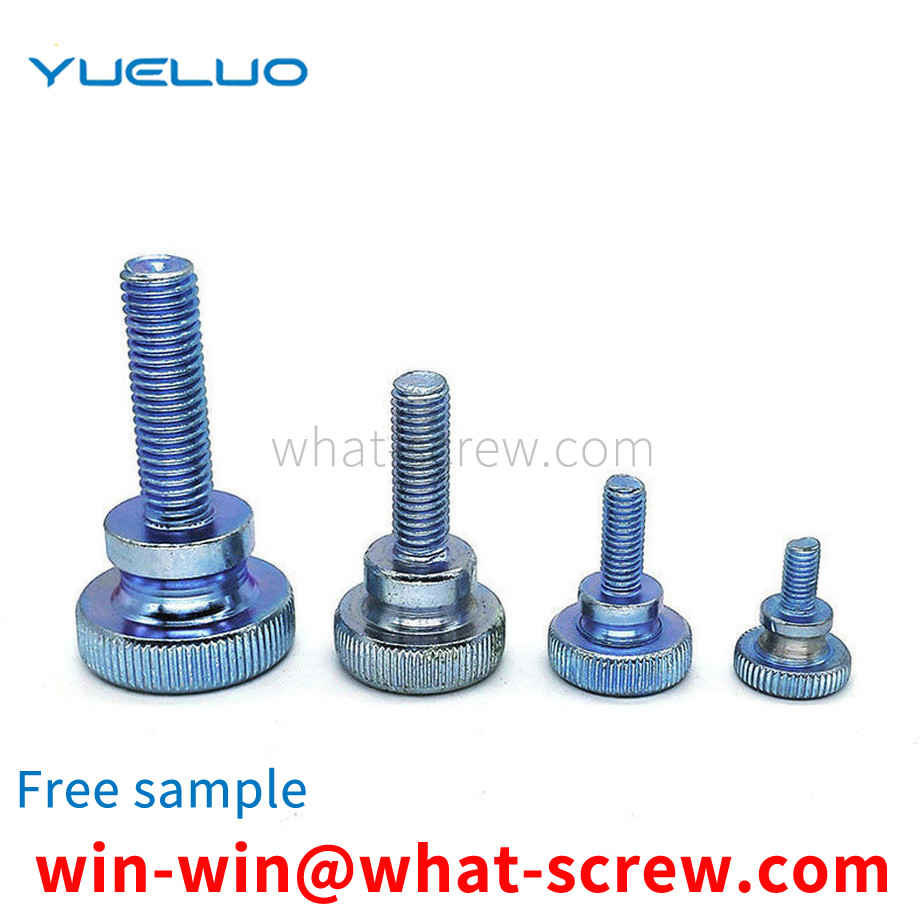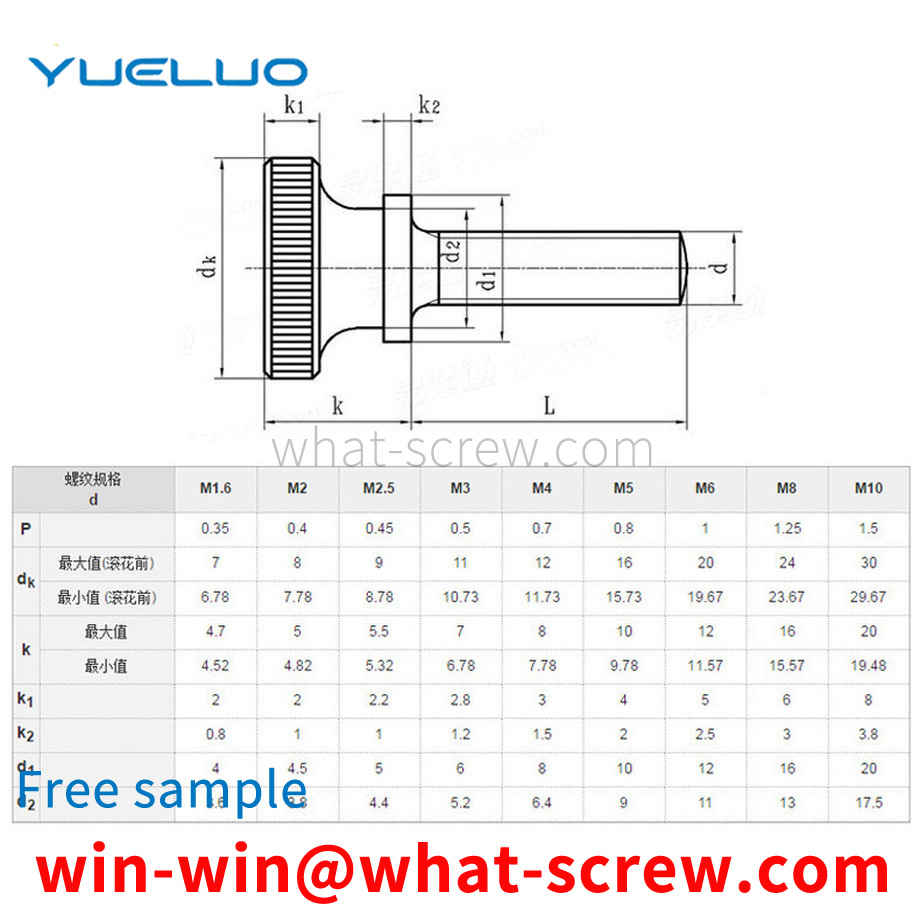The existing open-type blind rivets are widely used, usually composed of an iron rivet shell and an iron or stainless steel mandrel. During the riveting process, the open-type rivets are often unstable and biased due to the unsteady breaking force of the mandrel. When the foam is riveted, the nail head is directly pulled into the foam layer to damage the product structure. And there may be safety hazards such as scratching the operator during the installation process due to the exposed nail core. At the same time, due to the expansion of the rivet shell hole, the nail head will be loose inside.
screw is a tool that uses the physical and mathematical principles of the circular rotation and friction of an object to fasten the parts of the object step by step. Since the parts to be fixed are different, different types of screws are required for different applications. Press screw is a new type of fastener applied to thin plate or sheet metal. The principle is to press the embossed teeth into the preset holes of the sheet metal. The diameter of the general preset holes is slightly smaller than the outer diameter of the pressure riveting screw. The periphery of the hole is plastically deformed, and the deformed object is squeezed into the guide groove, thereby producing a locking effect. However, the existing pressing screws are easy to loosen due to long use time or frequent vibrations, which is prone to certain hidden dangers.
Fasteners include: bolts, studs, screws, nuts, washers, pins. Locking or seizure often occurs on fasteners of stainless steel, aluminum alloy and titanium alloy materials. These metal alloys themselves have anti-corrosion properties. When the surface is damaged, a thin oxide layer will be formed on the metal surface to prevent further rust. When the stainless steel fastener is locked, the pressure and heat generated between the teeth will destroy the oxide layer, causing blockage or shearing between the metal threads, and then the phenomenon of adhesion occurs. When this phenomenon persists, the stainless steel fasteners will be completely locked and can no longer be removed or continued to lock. Usually this series of blocking_shear_adhesion_locking takes place in just a few seconds, so the correct understanding of the use of this type of fasteners can prevent this phenomenon.
According to the force of the connection, it is divided into ordinary and hinged holes. According to the shape of the head: there are hexagonal head, round head, square head, countersunk head and so on. Among them, the hexagonal head is the most commonly used. Generally, countersunk heads are used where connections are required. [1] The English name of the riding bolt is U-bolt. It is a non-standard part. The shape is U-shaped, so it is also called a U-bolt. There are threads on both ends that can be combined with nuts. It is mainly used to fix tubular objects such as water pipes or sheets such as The leaf spring of a car is called a horse-riding bolt because it fixes the object in the same way that a person rides on a horse. According to the length of the thread, it is divided into two categories: full thread and non-full thread. [2] According to the thread type, it is divided into two types: coarse thread and fine thread. The coarse thread is not displayed in the bolt mark. The bolts are divided into eight grades: 3.6, 4.8, 5.6, 6.8, 8.8, 9.8, 10.9, and 12.9 according to their performance grades. Among them, the bolts above grade 8.8 (including grade 8.8) are made of low-carbon alloy steel or medium-carbon steel and are heat-treated (quenched). + Tempering), commonly known as high-strength bolts, and below grade 8.8 (excluding 8.8) are commonly known as ordinary bolts. [2] Ordinary bolts can be divided into three grades: A, B, and C according to the production accuracy. Grades A and B are refined bolts, and grade C is rough bolts. For connecting bolts for steel structures, unless otherwise specified, they are generally ordinary rough grade C bolts. There are differences in the processing methods of different grades. Usually the corresponding processing methods are as follows: ① The bolts of grade A and B bolts are processed by lathes, with smooth surfaces and accurate dimensions. High, rarely used; ②C-grade bolts are made of unmachined round steel, the size is not accurate enough, and its material property grade is 4.6 or 4.8. The deformation is large during shear connection, but the installation is convenient and the production cost is low. It is mostly used for tensile connection or temporary fixation during installation. [2]
Principles of stainless steel screw material selection: The selection of stainless steel materials is mainly considered from the following five aspects. 1. Requirements on mechanical properties, especially strength, of stainless steel screw materials; 2. Requirements on corrosion resistance of materials by working conditions; 3. Heat resistance of materials by working temperature (high temperature strength, oxidation resistance) 4. Requirements for material processing performance in terms of production technology; 5. Other aspects such as weight, price, procurement and many other factors must be considered.
We have many years of experience in the production and sales of screws, nuts, flat washers, etc. The main products are: metal self-locking nuts, extra thick and extra wide flat washers, torsion shear bolts, shoulder screws and other products, we can provide you with products suitable for you fastener solutions.



















 Service Hotline
Service Hotline




